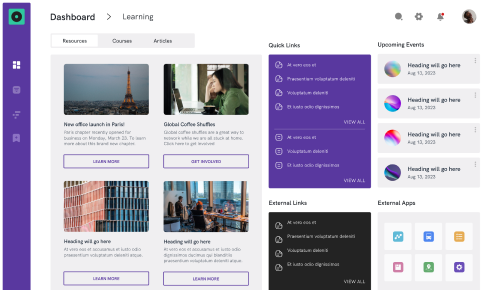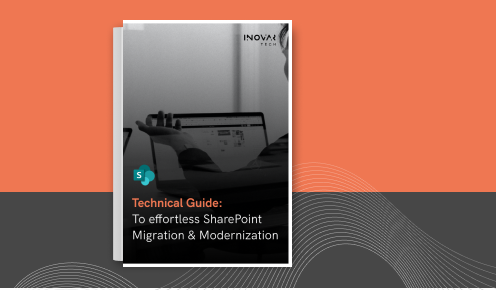8 Expert Strategies to Minimize Potential Blowbacks From Adopting Generative AI
 By Anita Srinivasan
By Anita Srinivasan
 11th March, 2024
11th March, 2024
Generative AI best practices
Generative AI strategies
Generative AI adoption
Ethical AI practices
“Change is inevitable, except from a vending machine”, quipped Robert Gallagher once. This phrase is even more relevant today as organizations consider transformations with AI and Generative AI initiatives.
Before adopting a Generative AI transformation strategy, do companies consider the long-term consequences of the change? If this transformation is going to be beneficial for them in the long run? Or are they just simply considering transformation because it is a popular trend?
To answer all these burning questions, today we will discuss why transformation should be a well-planned process. We will also analyze the risks you can expect with such initiatives and explore ways to minimize potential failures.
Are you interested in Change Management and don’t know where to start? Here is a nifty guide to help you get started.
In an article featured in the Harvard Business Review, John P Kotter, a Professor of Leadership at Harvard Business School, said over the years he has had the opportunity to observe over 100 companies that have tried to improve themselves to get ahead of their competition. These companies have attempted various change strategies over a period of time like restructuring, reengineering, and quality management. With these initiatives, most of the time, companies aim to deal with a competitive and challenging market by changing their business practices.
Some companies succeeded, and some failed. However, many fell in between, with not-so-great outcomes.
One major takeaway from this article is that transformation takes time and involves numerous phases, which does not necessarily lead to satisfactory results. Another lesson is that significant mistakes at any stage can slow down progress and cancel out earlier successes. These lessons are valuable because even experienced managers can make errors.
Getting on the Generative AI transformation bandwagon may be thrilling and daunting for organizations; however, Transformation and Change is something which has been tried with multiple paradigm shifts, thus the pitfalls that can derail progress remain constant and can cause failure, if not navigated cautiously.
Keeping these considerations in mind now, let’s look at eight critical factors contributing to transformation risk and explore strategies that can lessen the impact of a potential failure.
Addressing scope expansion in project management is vital, and integrating generative AI enhances precision. Establish a clear scope from the start, utilizing generative AI for real-time insights. Involve stakeholders for alignment, and implement robust change control processes, leveraging AI to evaluate and approve scope adjustments promptly. This approach boosts project efficiency and resilience.
Leadership is crucial for successful transformations. Leaders should not only support change but also actively promote it. Creating a culture of accountability is also crucial, where leaders take responsibility for the outcomes of the transformation. They should communicate their vision, provide transparent expectations, and lead by example to build confidence in the team.
- Balancing Technology Dependency
Embracing AI as a tool is valuable, but excessive reliance without understanding repercussions can lead to complications. Strive to strike a healthy balance between AI and human capabilities. Conduct thorough assessments to ensure selected technologies align with organizational requirements. Additionally, invest in comprehensive training to equip employees with the necessary skills to leverage Generative AI effectively.
- Enhancing People Management
Successful transformations hinge on sound people management. Address resistance by promoting open communication channels and creating a supportive environment for feedback. Allocate ample resources for training and development to bridge skill gaps. Acknowledge and celebrate accomplishments to uplift morale and create a positive atmosphere conducive to collaboration.
- Adopting Change Management
Change management is integral to navigating successful transformations. Develop a robust change management plan encompassing communication strategies, stakeholder engagement, and a phased implementation approach. Anticipate resistance, proactively address concerns, and celebrate incremental achievements to build momentum and receive support for change.
As Generative AI is very new, Internal viewpoints may be limited. Incorporate external consultants or advisors to offer fresh insights and an unbiased evaluation of the transformational journey. External perspectives can provide valuable strategic guidance, identify blind spots, and contribute to a more comprehensive transformation strategy.
- Establishing Clear Metric
Integrating generative AI streamlines progress tracking. Establish KPIs aligned with transformational goals, and regularly leverage AI for measurement and analysis. This dynamic approach ensures informed decision-making and provides stakeholders with tangible insights into the impact of the transformation.
- A Performance-Oriented Culture
Cultivating a culture that focuses on performance is important for long-term success. We must encourage a mindset that values continuous improvement, innovation, and adaptability. Recognition and rewards should be given to those who perform well in line with the transformation goals, promoting a culture where employees are motivated to work towards organizational growth.
In closing, we must understand that transformations are not easy and can be chaotic and uncomfortable. Addressing transformation risks requires strategic planning, leadership, cultural alignment, and continuous adaptation.
Studies have shown that leaders who actively engage with their employees achieve greater success. They recognize and address emotions rather than brushing them aside. The most effective leaders communicate a shared vision throughout the organization and cultivate a safe environment that encourages collaboration and active listening.
Remember that transformation is more than just changing processes; it is about creating a forward-thinking organizational culture.
Ready to navigate change with confidence? Explore our comprehensive resources, insightful blogs, and transformative services to empower your journey. Embrace change with InovarTech today. Connect with our team for expert guidance!
References:
- Reducing the risk of transformation failure. The Digital Transformation People
- Leading Change: Why Transformation Efforts Fail. Harvard Business Review




























